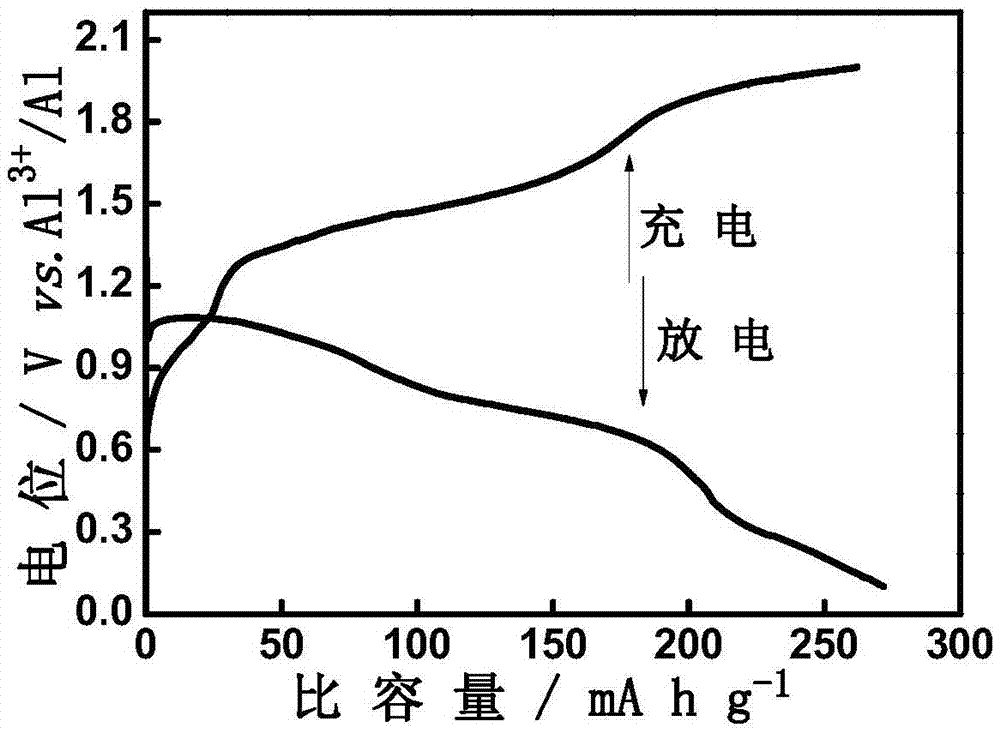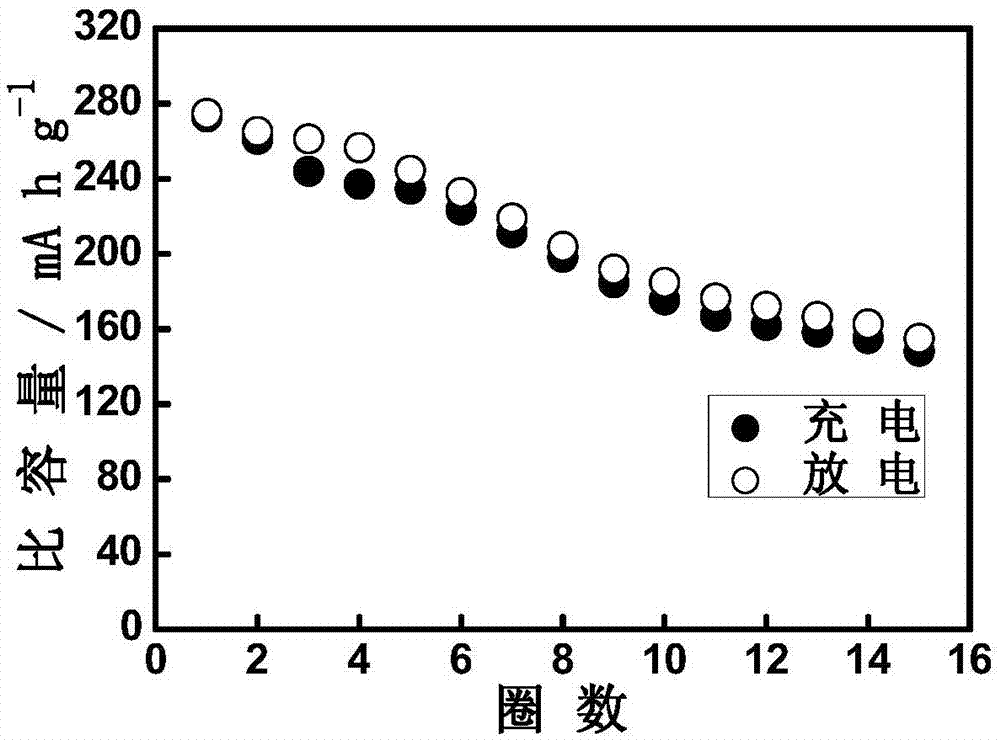Aluminium ion secondary battery taking CuS as cathode and preparation technology thereof
A technology of secondary battery and preparation process, which is applied in the direction of secondary battery, electrolyte battery manufacturing, battery electrodes, etc. It can solve the problems of unreported CuS and its composite aluminum ion secondary battery, etc., and achieve abundant reserves and high cycle reversibility Sexuality and wide application prospects
- Summary
- Abstract
- Description
- Claims
- Application Information
AI Technical Summary
Problems solved by technology
Method used
Image
Examples
Embodiment 1
[0025]The positive active material is CuS, the conductive material is acetylene black, and the binder is polytetrafluoroethylene (PTFE). The three are mixed evenly in absolute ethanol according to the mass ratio of 50:40:10, and then baked in an oven at 80 degrees Celsius until gelatinous, and then the gelatinous material is evenly smeared on a suitable size current collector tantalum On the sheet (thickness 0.01mm), it was finally dried in an oven at 100 degrees Celsius for more than 12 hours and then wrapped with GF / D separator material as the positive electrode of the battery. The negative electrode is made of high-purity aluminum sheet with a thickness of 0.2 mm, which is cut into pieces of suitable size, then polished with fine sandpaper, washed in absolute ethanol, and dried by ultrasonic vibration as the negative electrode material. Anhydrous aluminum chloride and 1-ethyl-3-methylimidazolium chloride in a molar ratio of 1.3:1 are prepared into an ionic liquid in a glove...
Embodiment 2
[0027] The positive active material is CuS, the conductive material is graphene, and the binder is polytetrafluoroethylene (PTFE). The three are mixed evenly in absolute ethanol according to the mass ratio of 80:10:10, and then baked in an oven at 80 degrees Celsius until gelatinous, and then the gelatinous material is evenly smeared on a suitable size current collector niobium On the sheet (thickness 0.01mm), it was finally dried in an oven at 60 degrees Celsius for more than 12 hours and then wrapped with GF / D separator material as the positive electrode of the battery. The negative electrode is made of high-purity aluminum sheet with a thickness of 0.2 mm, which is cut into pieces of suitable size, then polished with fine sandpaper, washed in absolute ethanol, and dried by ultrasonic vibration as the negative electrode material. Anhydrous aluminum chloride and 1-ethyl-3-methylimidazolium chloride in a molar ratio of 1.3:1 are prepared into an ionic liquid in a glove box in ...
Embodiment 3
[0029] The positive active material is CuS, and the conductive material is platinum paste. The two are mixed evenly in absolute ethanol in a mass ratio of 80:20, and then baked in an oven at 80 degrees Celsius to a gel-like substance, and then the gel-like substance is It is evenly spread on the niobium sheet of suitable size (thickness 0.01mm), and finally dried in an oven at 80 degrees Celsius for more than 12 hours, and then wrapped with GF / D separator material as the positive electrode of the battery. The negative electrode is made of high-purity aluminum sheet with a thickness of 0.2 mm, which is cut into pieces of suitable size, then polished with fine sandpaper, washed in absolute ethanol, and dried by ultrasonic vibration as the negative electrode material. Anhydrous aluminum chloride and 1-ethyl-3-methylimidazolium chloride in a molar ratio of 1.3:1 are prepared into an ionic liquid in a glove box in an argon atmosphere, as the electrolyte for the aluminum ion secondar...
PUM
| Property | Measurement | Unit |
|---|---|---|
| thickness | aaaaa | aaaaa |
| thickness | aaaaa | aaaaa |
Abstract
Description
Claims
Application Information
 Login to View More
Login to View More - R&D
- Intellectual Property
- Life Sciences
- Materials
- Tech Scout
- Unparalleled Data Quality
- Higher Quality Content
- 60% Fewer Hallucinations
Browse by: Latest US Patents, China's latest patents, Technical Efficacy Thesaurus, Application Domain, Technology Topic, Popular Technical Reports.
© 2025 PatSnap. All rights reserved.Legal|Privacy policy|Modern Slavery Act Transparency Statement|Sitemap|About US| Contact US: help@patsnap.com


